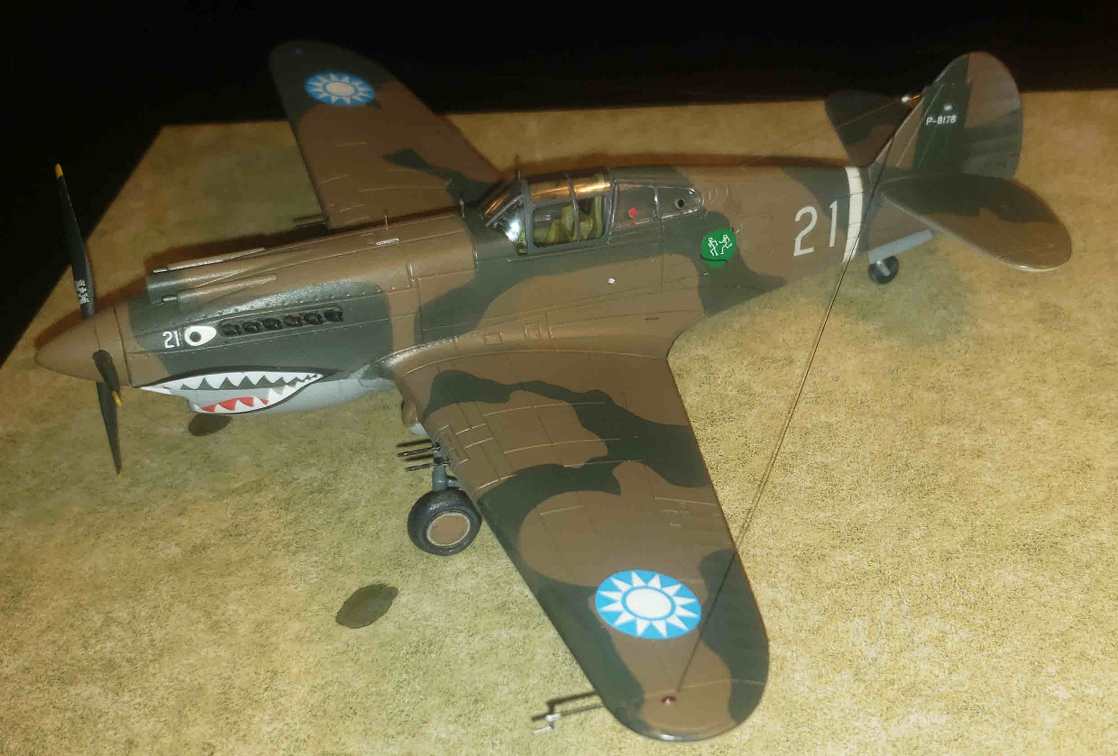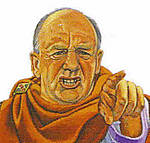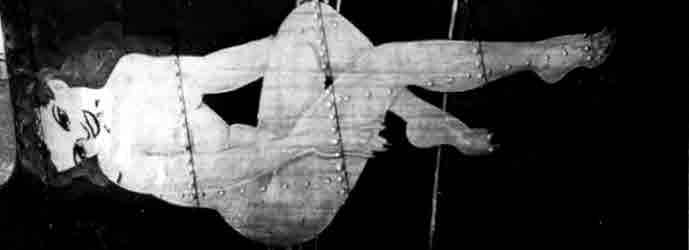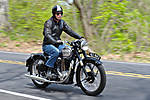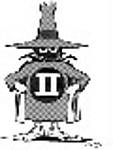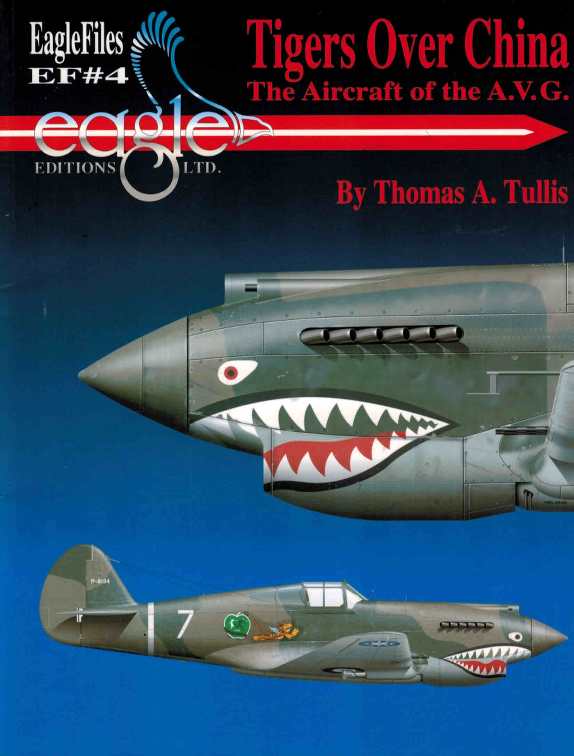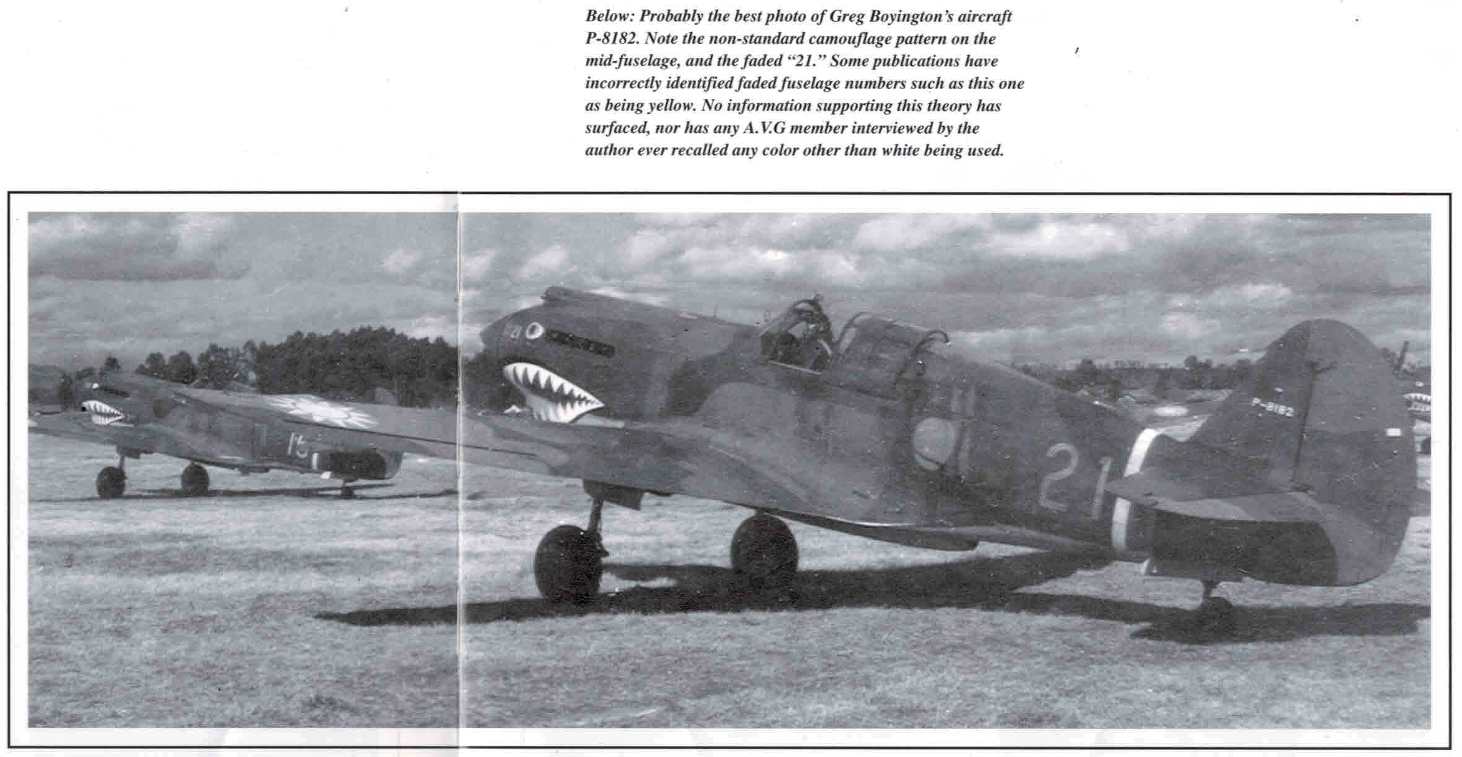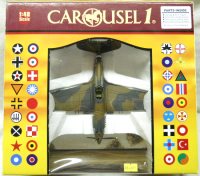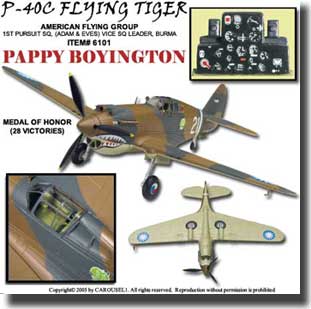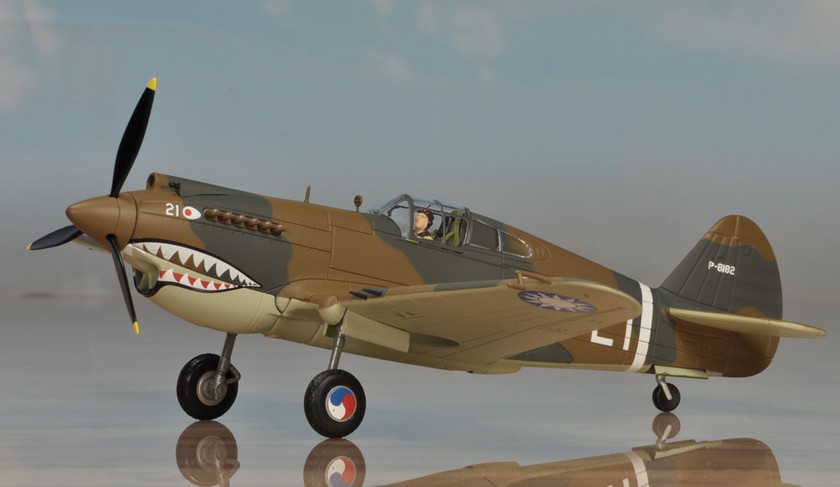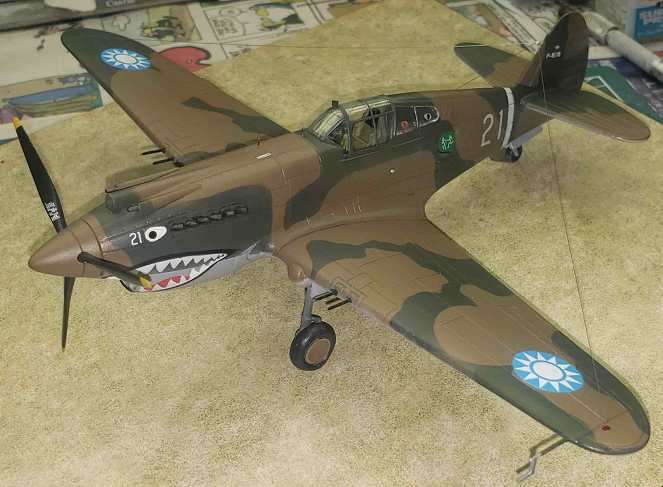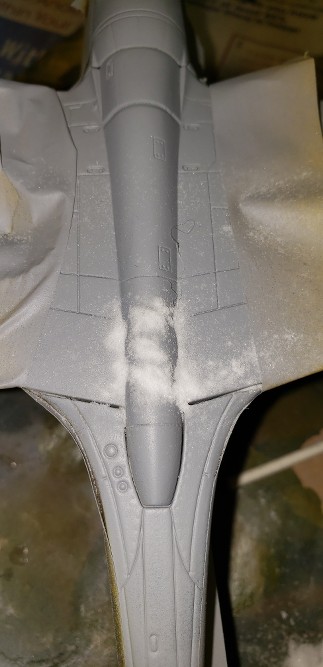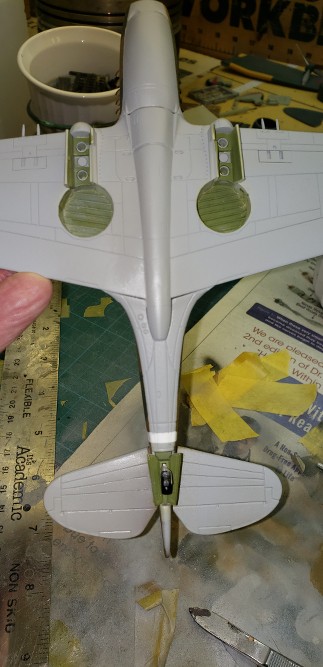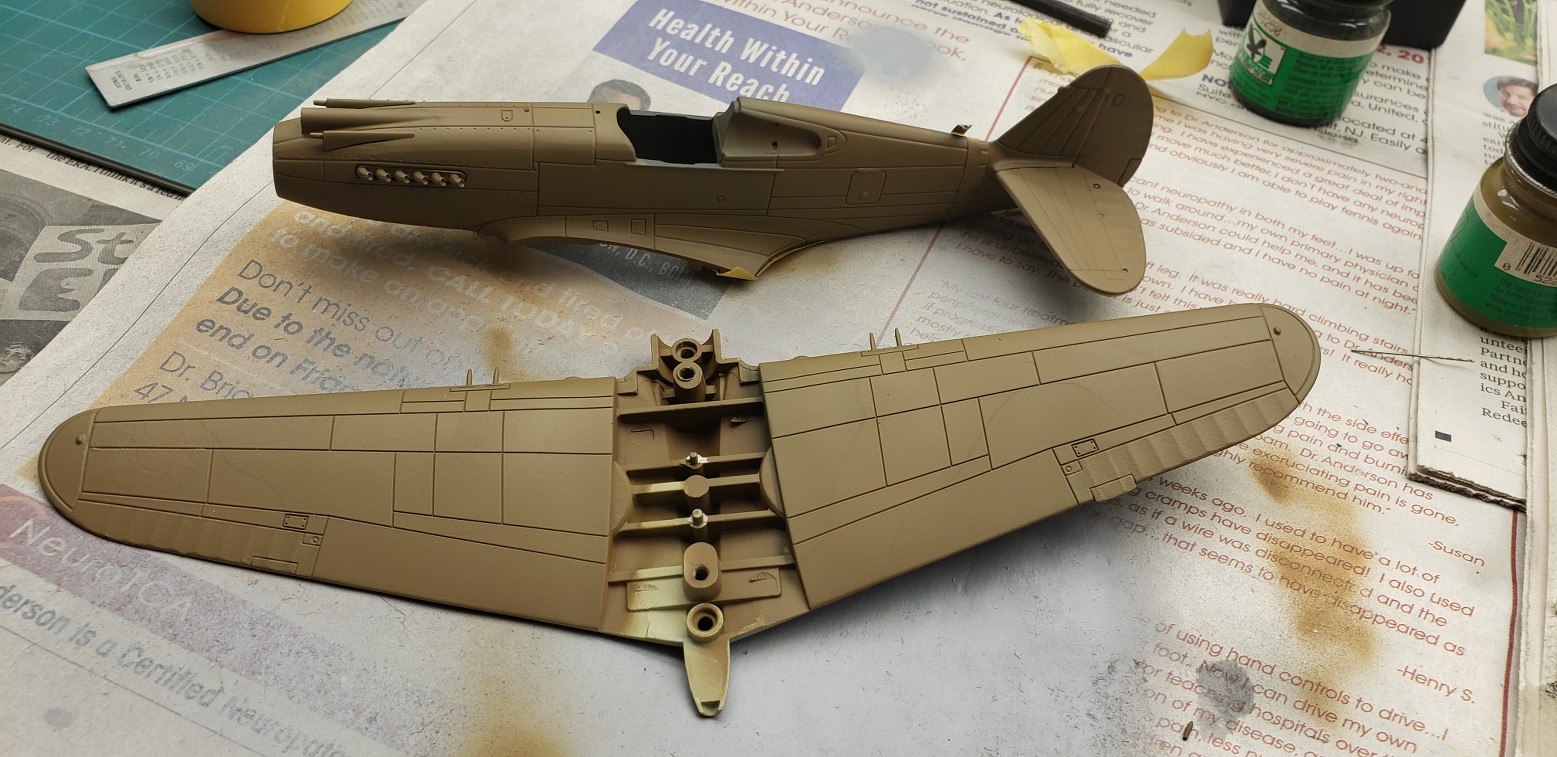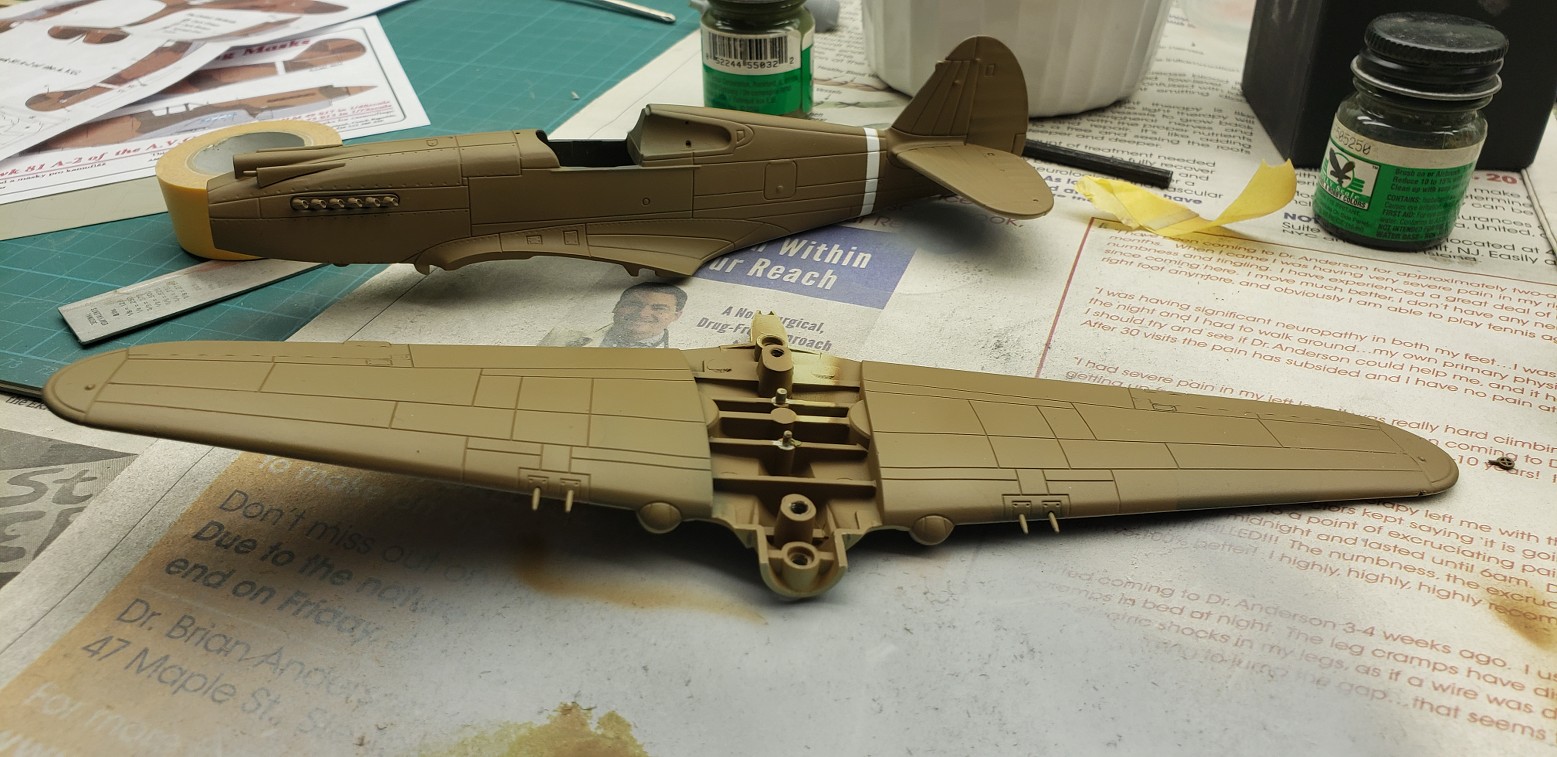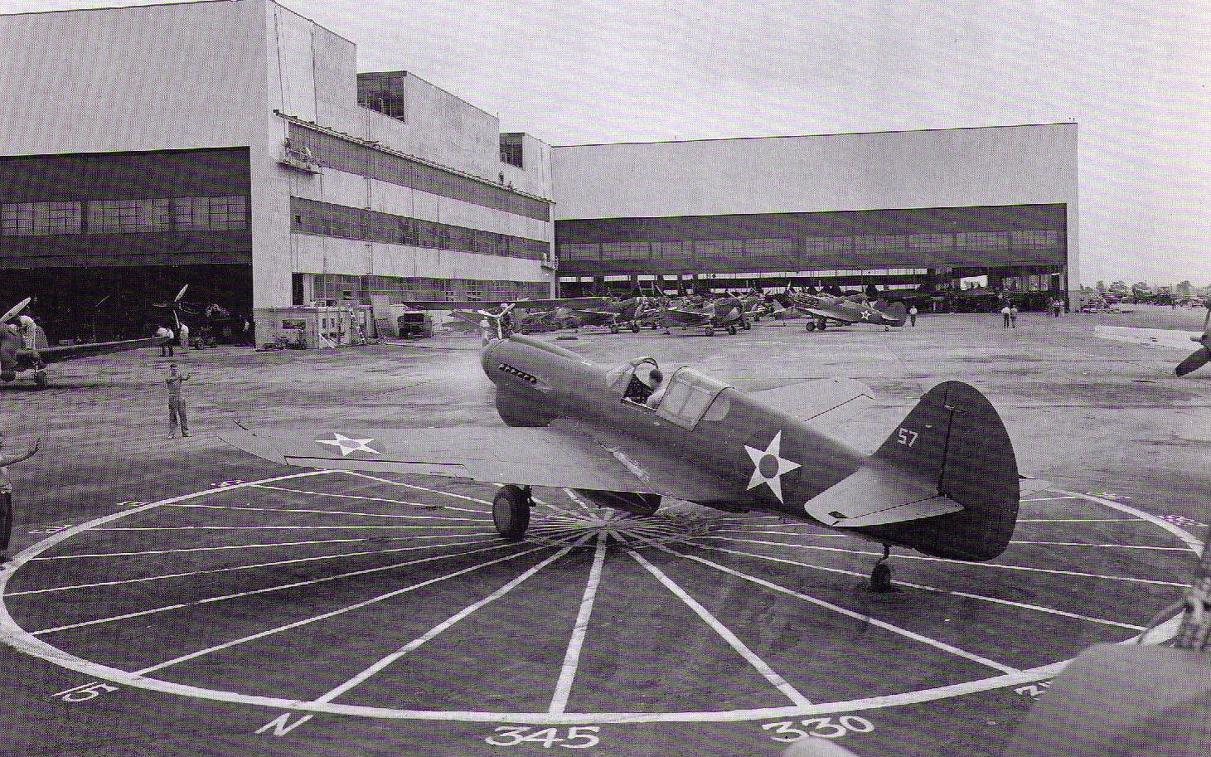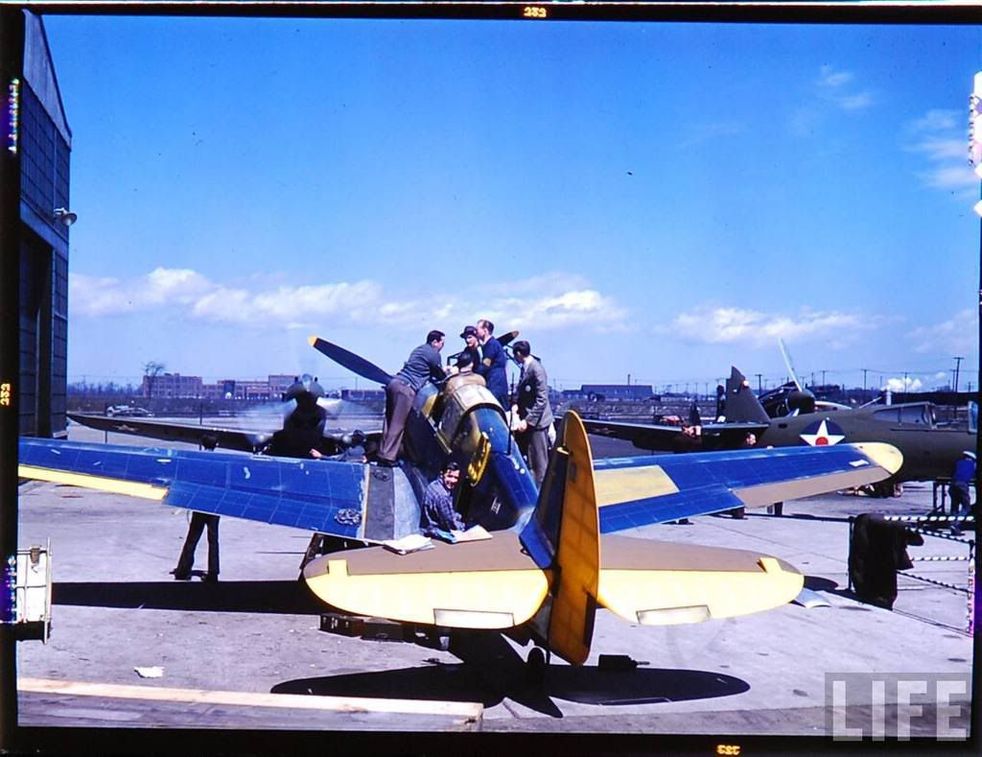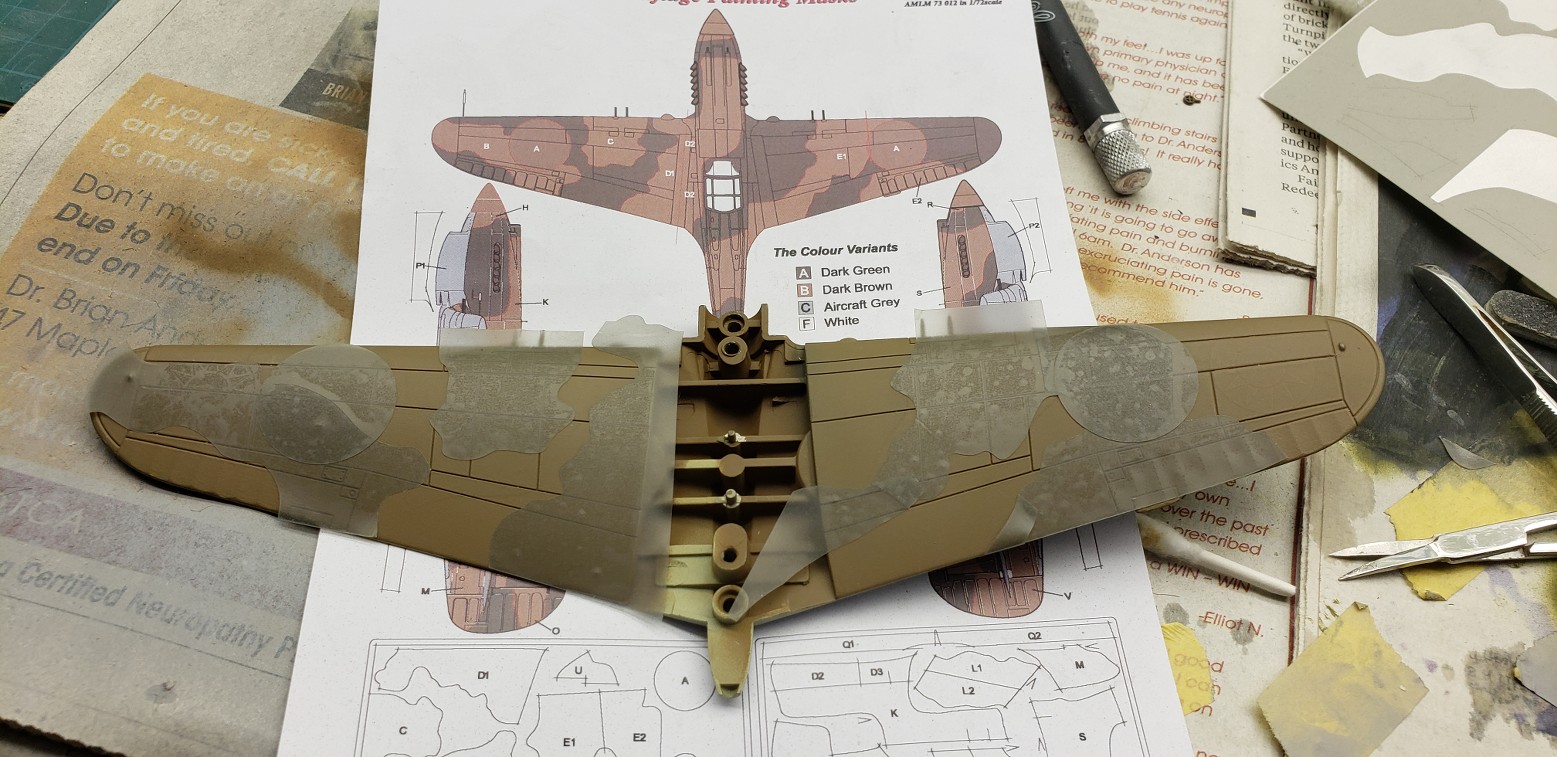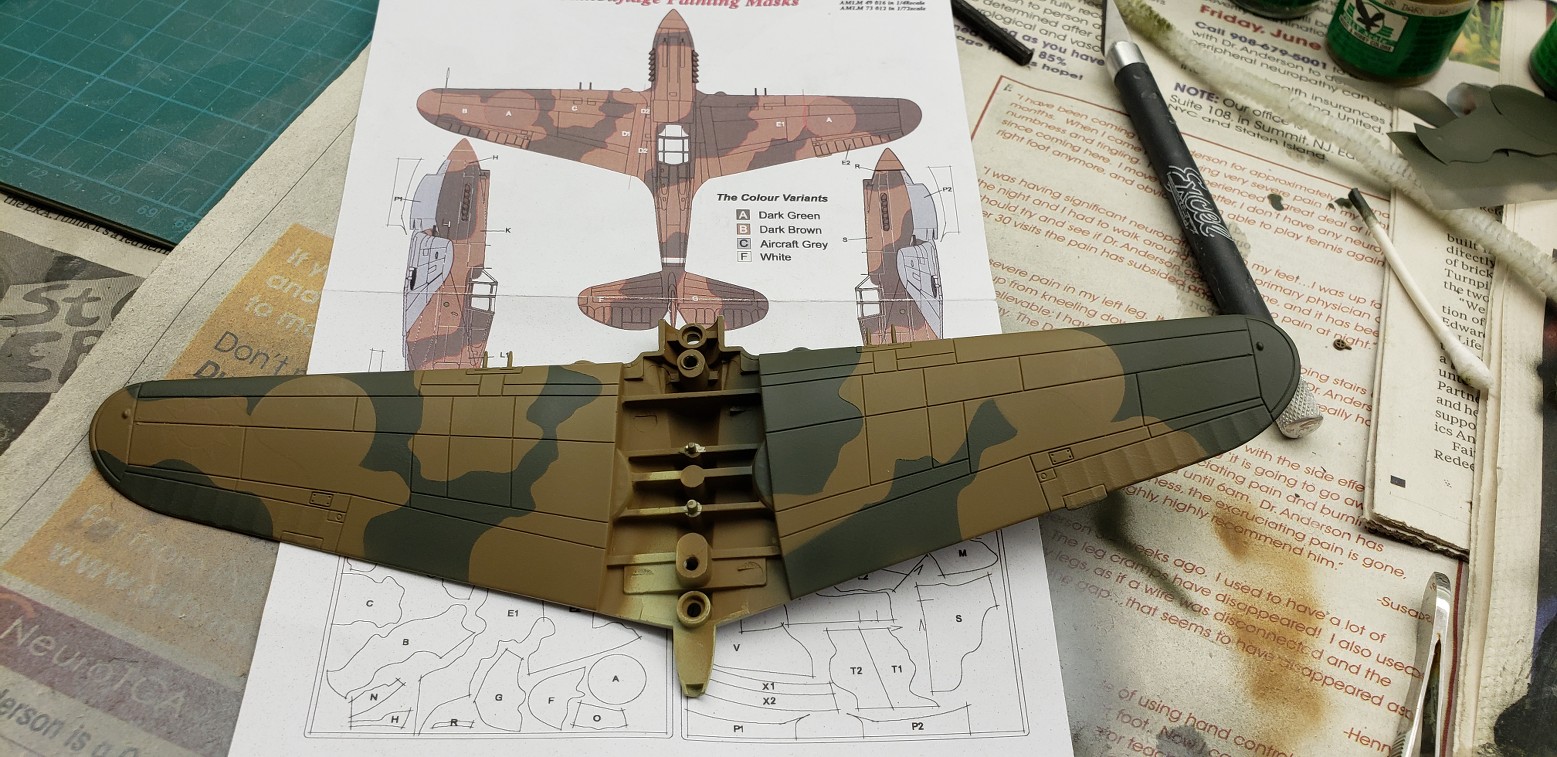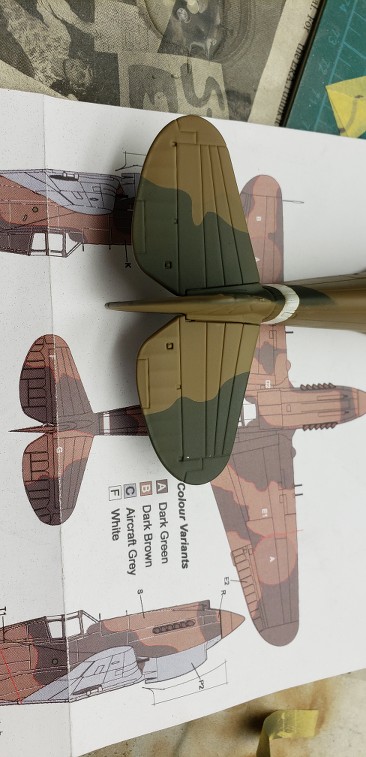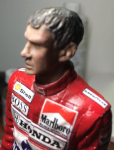SIZING UP THE JOB
When I first got this model, the only thing I saw "wrong" about it in terms of general appearance was that the bottom of the aircraft was painted in "Sky Type S" rather than the light gray that we now know was painted on at the Curtiss factory in Buffalo, NY. So, if I was going to make this more realistic and presentable, my initial thought was that all I had to do was repaint the bottom. I scratched my head a little bit about the shark teeth and how to do that, but figured I would deal with it later on. (Little did I know that the shark mouth was going to be the make-or-break part of this project.)
Upon much closer examination over a long period of time, and before I took the plunge, I realized that there was much more wrong with the external appearance. Below are some pictures in which I will discuss this.
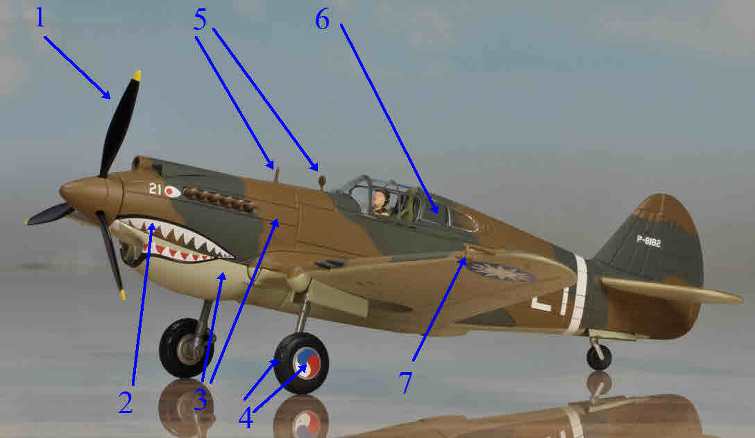
The first photo is numbered 1-7 and let's get into it.
1. The propeller is inaccurate. I will show you more pictures of that later and why it was essential to replace it.
2. When I started researching shark mouths on AVG Hawks, I learned that each aircraft was different. Further research showed that the shark mouth on the model was nowhere near what the one on Boyington's aircraft looked like.
3. Not only was the bottom color wrong but the layout of the green and brown camouflage topside was a product of the designer's imagination rather than an examination of the photos available of real AVG aircraft. Carousel 1 decided to freestyle the pattern rather than adhere to the sharp camo patterns delineated by the rubber mats laid over the aircraft at the Curtiss factory to spray the camouflage paint on. Another problem where this was obvious was that the top wings did not have separate circles for the RAF insignia. That I will show later.
4. The main wheels were wrong. They had a delicate tread pattern whereas the AVG aircrafts' main wheels were smooth. Also, I learned later that the fancy three-color "pinwheel" painting of the wheel hub covers was not present on Boyington's aircraft. It was painted the same "dark earth" present on the upper surfaces of the aircraft.
5. The post and the ring sight was hopelessly out of scale and needed to be replaced.
6. There were no holes for the fuel cap and vent in the port rear window.
7. The pitot tube was unsatisfactory. It was rubber and bent. The same was true of the wing guns, which were also too short.
Let's move on to the next picture.
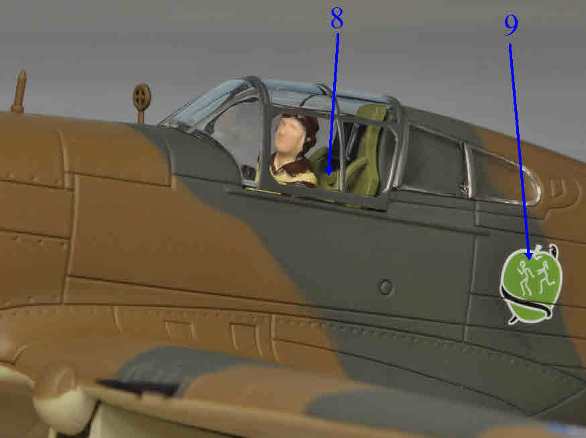
8. Further research disclosed that the pilot seat in this aircraft was wrong. It was basically good for a US Air Corps P-40B, but was not the export seat that AVG Hawks had.
9. The designer got the squadron symbol right, but not the details. Just as with the shark mouths, squadron insignia on AVG aircraft varied greatly in appearance. The green apple with the woman chasing the man (wait, isn't that usually the other way around?) was far fancier than on Boyington's aircraft.
Okay here's the last photo of this post.

10. There are other Carousel 1 models far more accurate than this one, but all of them have a horrible raised logo on the bottom of the right horizontal stabilizer. I knew it was there and wondered if I would try to fix it or not. I mean, it's raised metal!
You'll see what happens later.

